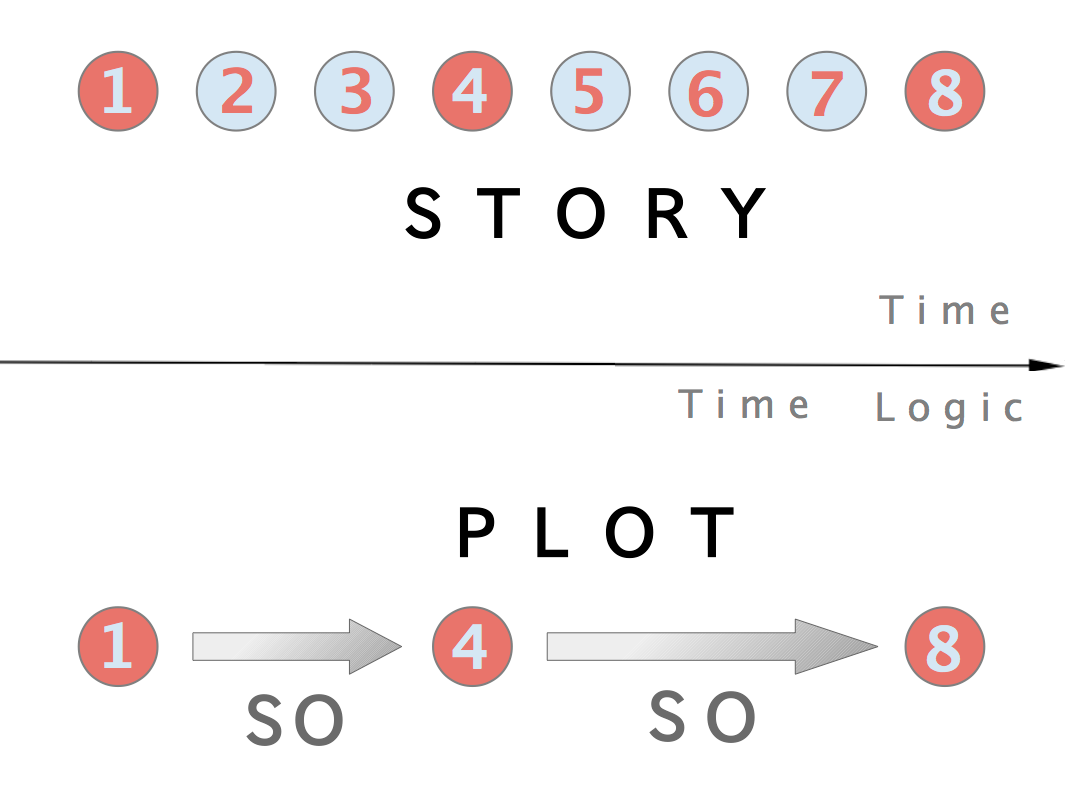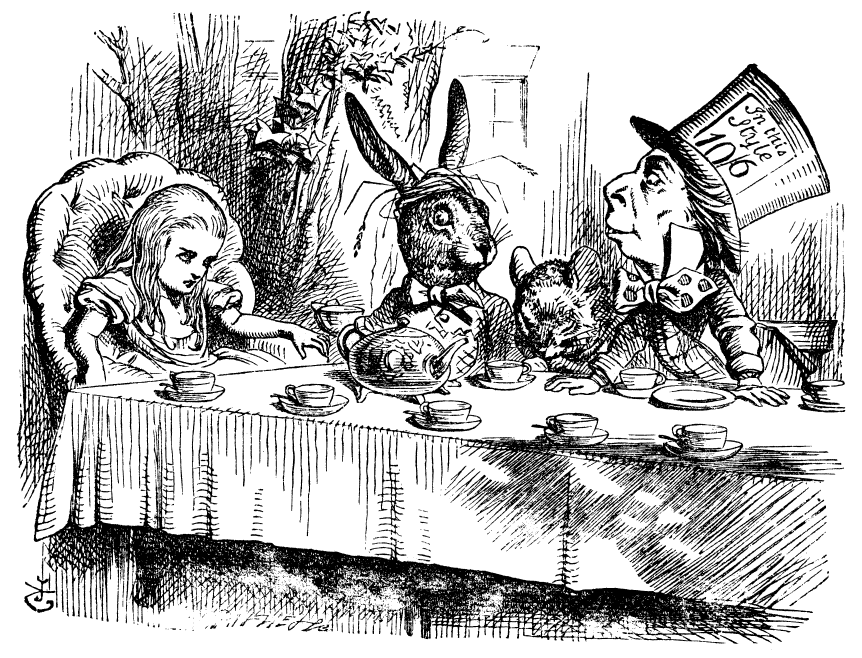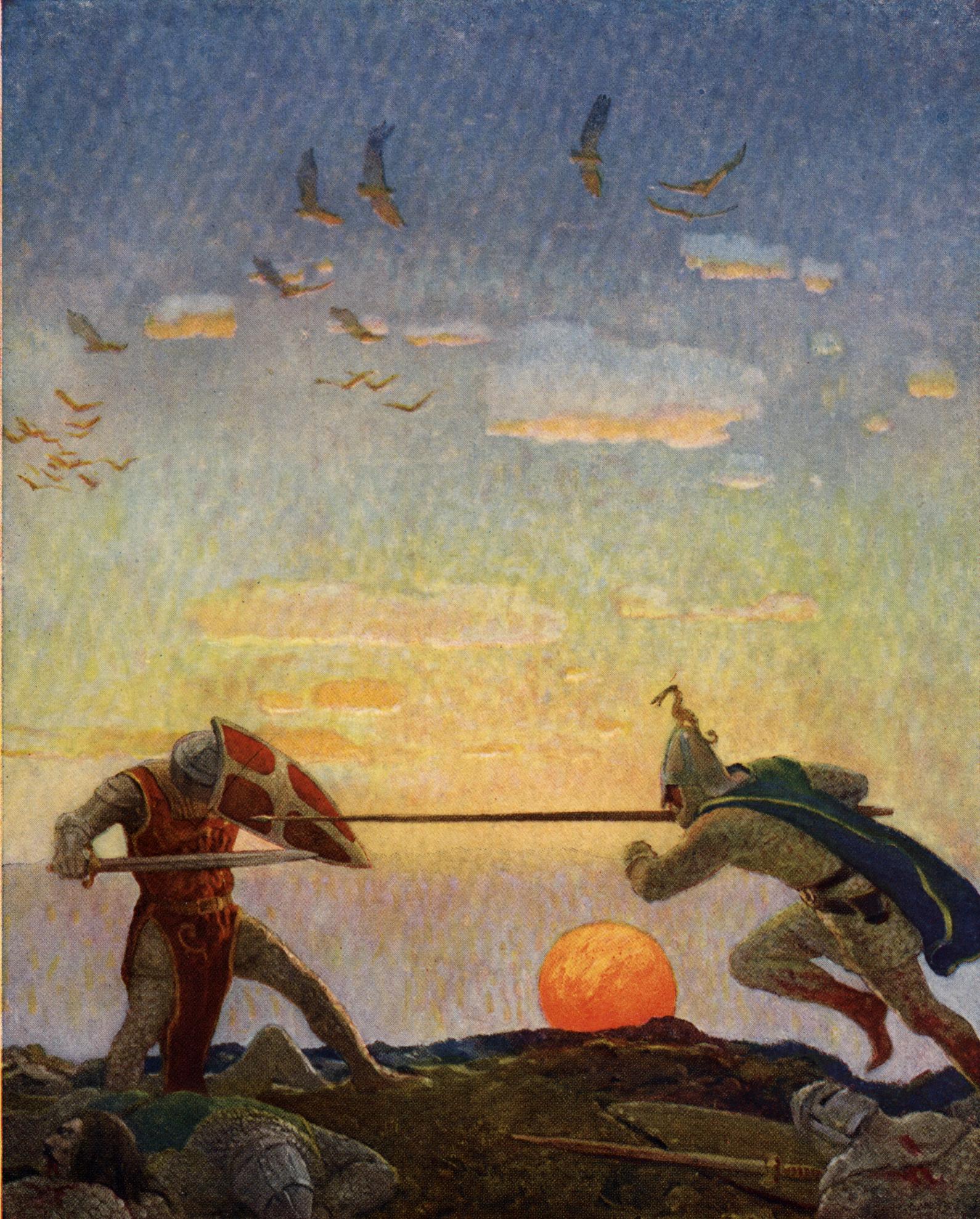|
Subplot
In fiction, a subplot or side story is a strand of the plot that is a supporting side story for any story or for the main plot. Subplots may connect to main plots, in either time and place or thematic significance. Subplots often involve supporting characters, those besides the protagonist or antagonist. Subplots may also intertwine with the main plot at some point in a story. An example of a subplot interacting with a main plot can be found in the TV series '' Mr. Robot'' (season 1). One of the main plots followed the hacker ring known as F-society, led by Elliot Alderson, where they intended to perform a massive hack against the conglomerate Evil Corp; they were executing this hack through a partnership with another hack-ring known as The Dark Army. A subplot emerged around the character development of Elliot's childhood friend and love interest Angela Moss where she evolved from a brow-beaten assistant at cybersecurity firm Allsafe into a powerbroker at Evil Corp through first ... [...More Info...] [...Related Items...] OR: [Wikipedia] [Google] [Baidu] |
Protagonist
A protagonist () is the main character of a story. The protagonist makes key decisions that affect the plot, primarily influencing the story and propelling it forward, and is often the character who faces the most significant obstacles. If a story contains a subplot, or is a narrative made up of several stories, then each subplot may have its own protagonist. The protagonist is the character whose fate is most closely followed by the reader or audience, and who is opposed by the antagonist. The antagonist provides obstacles and complications and creates conflicts that test the protagonist, revealing the strengths and weaknesses of the protagonist's character, and having the protagonist develop as a result. A particularly noble, virtuous, or accomplished protagonist is commonly called a ''hero,'' though the terms are not synonyms. Etymology The term ''protagonist'' comes , combined of (, 'first') and (, 'actor, competitor'), which stems from (, 'contest') via (, 'I conten ... [...More Info...] [...Related Items...] OR: [Wikipedia] [Google] [Baidu] |
Plot (narrative)
In a literary work, film, or other narrative, the plot is the mapping of events in which each one (except the final) affects at least one other through the principle of Causality, cause-and-effect. The causal events of a plot can be thought of as a selective collection of events from a narrative, all linked by the connector "and so". Simple plots, such as in a traditional ballad, can be linearly sequenced, but plots can form complex interwoven structures, with each part sometimes referred to as a subplot. Plot is similar in meaning to the term ''storyline''. In the narrative sense, the term highlights important points which have consequences within the story, according to American science fiction writer Ansen Dibell. The Premise (narrative), premise sets up the plot, the Character (arts), characters take part in events, while the Setting (narrative), setting is not only part of, but also influences, the final story. An can convolute the plot based on a misunderstanding. The term ... [...More Info...] [...Related Items...] OR: [Wikipedia] [Google] [Baidu] |
Screenwriting
Screenwriting or scriptwriting is the art and craft of writing scripts for mass media such as feature films, television productions or video games. It is often a freelance profession. Screenwriters are responsible for researching the story, developing the narrative, writing the script, screenplay, dialogues and delivering it, in the required format, to development executives. Screenwriters therefore have great influence over the creative direction and emotional impact of the screenplay and, arguably, of the finished film. Screenwriters either pitch original ideas to producers, in the hope that they will be optioned or sold; or are commissioned by a producer to create a screenplay from a concept, true story, existing screen work or literary work, such as a novel, poem, play, comic book, or short story. Types The act of screenwriting takes many forms across the entertainment industry. Often, multiple writers work on the same script at different stages of development with differ ... [...More Info...] [...Related Items...] OR: [Wikipedia] [Google] [Baidu] |
Fiction
Fiction is any creative work, chiefly any narrative work, portraying character (arts), individuals, events, or setting (narrative), places that are imagination, imaginary or in ways that are imaginary. Fictional portrayals are thus inconsistent with fact, history, or plausibility. In a traditional narrow sense, fiction refers to literature, written narratives in prose often specifically novels, novellas, and short story, short stories. More broadly, however, fiction encompasses imaginary narratives expressed in any Media (communication), medium, including not just writings but also drama, live theatrical performances, films, television programs, radio dramas, comics, role-playing games, and video games. Definition and theory Typically, the fictionality of a work is publicly expressed, so the audience expects a work of fiction to deviate to a greater or lesser degree from the real world, rather than presenting for instance only factually accurate portrayals or character (arts ... [...More Info...] [...Related Items...] OR: [Wikipedia] [Google] [Baidu] |
Supporting Character
A supporting character is a character in a narrative that is not the focus of the primary storyline, but is important to the plot/protagonist, and appears or is mentioned in the story enough to be more than just a minor character or a cameo appearance. Supporting characters differ from minor characters because they have complex backstory of their own, desires, and emotions. While this is usually in relation to the main character, rather than entirely independently, developed supporting characters add layers and dimension to the story and the protagonist. These back stories can increase the plot or further develop the main character. Different supporting characters have different roles. Some common types of supporting characters include: love interest, antagonist, best friend, mentor, sidekick, comic relief, and caregiver. Each supporting character has their own role that advances the plot and brings about conflict. Often, supporting characters can cross over into different tro ... [...More Info...] [...Related Items...] OR: [Wikipedia] [Google] [Baidu] |
Antagonist
An antagonist is a character in a story who is presented as the main enemy or rival of the protagonist and is often depicted as a villain.About.com, Literature: Contemporary "Antagonist." Online. 18 October 2007. * Retrieved 25 March 2015. * Retrieved on 27 March 2015. * Retrieved on 27 March 2015. * Retrieved on 27 March 2015. Etymology The English word antagonist comes from the Greek ἀνταγωνιστής – ''antagonistēs'', "opponent, competitor, villain, enemy, rival," which is derived from ''anti-'' ("against") and ''agonizesthai'' ("to contend for a prize").Types Heroes and villains The ...[...More Info...] [...Related Items...] OR: [Wikipedia] [Google] [Baidu] |
Conflict (narrative)
Conflict is a major element of narrative or dramatic structure in literature, particularly European and European diaspora literature starting in the 20th century, that adds a goal and opposing forces to add uncertainty as to whether the goal will be achieved. In narrative, conflict delays the characters and events from reaching a goal or set of goals. This may include main characters or it may include characters around the main character. Despite this, conflict as a concept in stories is not universal as there are story structures that are noted to not center conflict such as griot, morality tale, kishōtenketsu, ta'zieh and so on. History Conflict, as a concept about literature, and centering it as a driver for character motivation and event motivation mainly started with the introduction of Conflict Theory from the 19th century. It moved to literature with Percy Lubbock in Craft of Fiction in 1921. He spends the majority of his treaties on fiction arguing past stories were ... [...More Info...] [...Related Items...] OR: [Wikipedia] [Google] [Baidu] |






